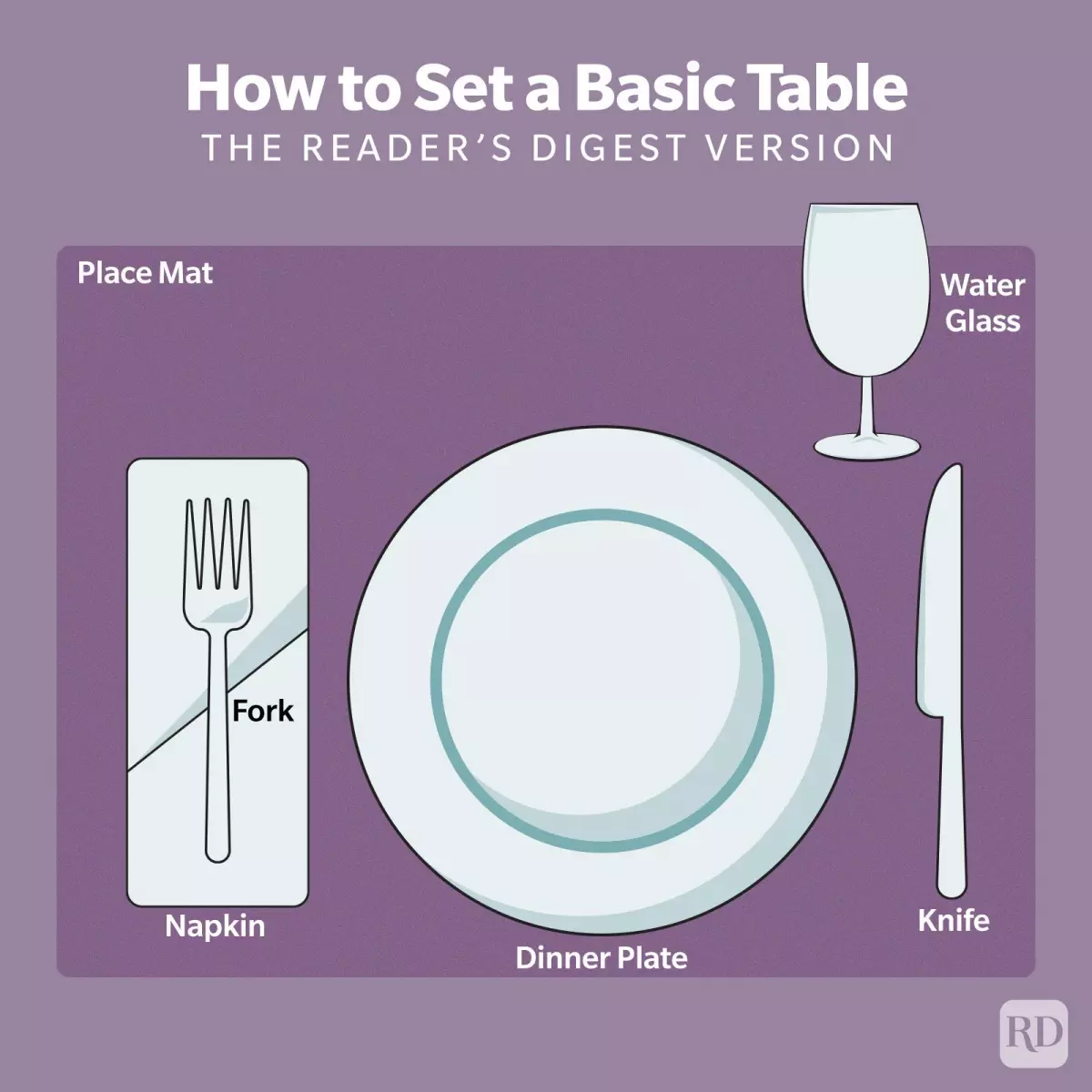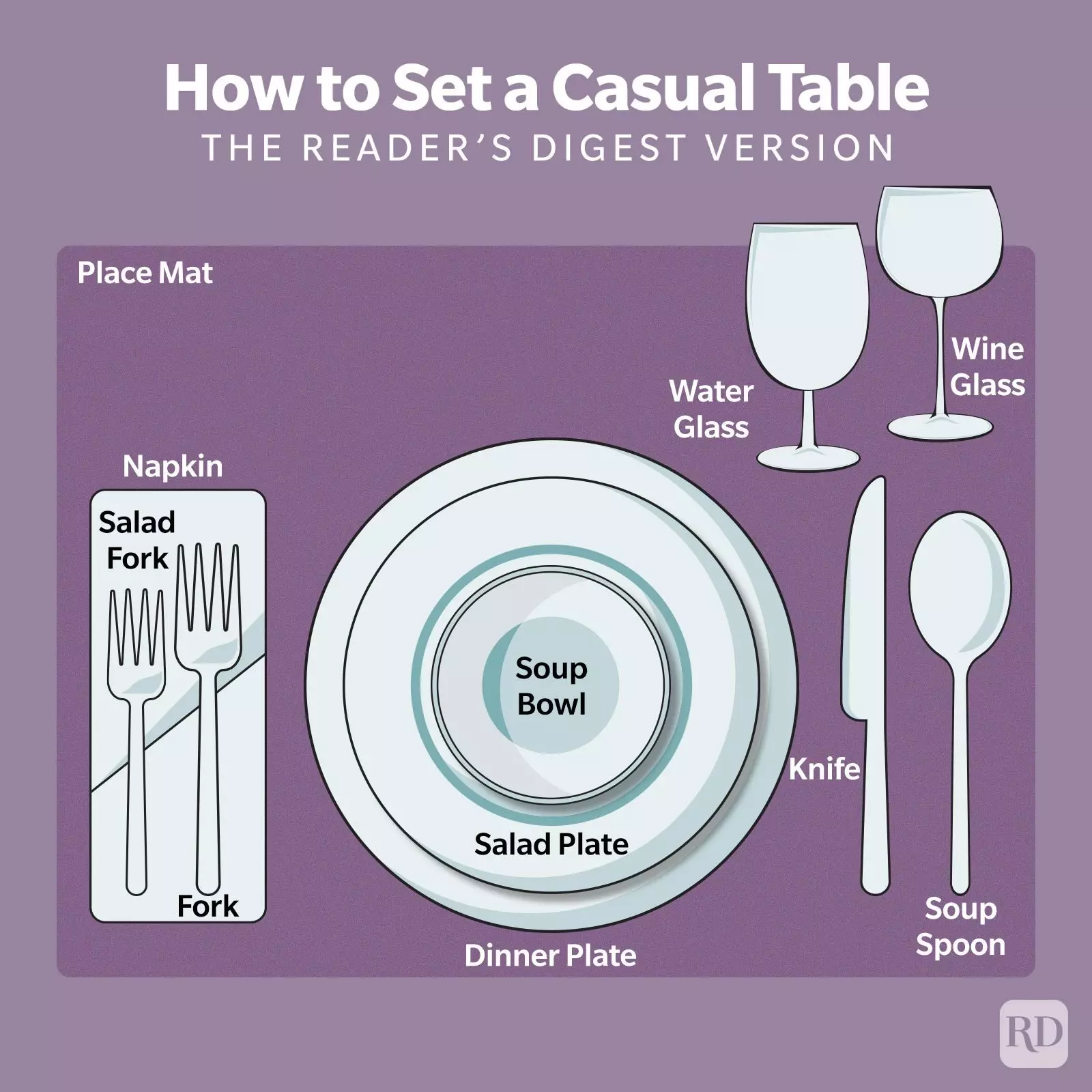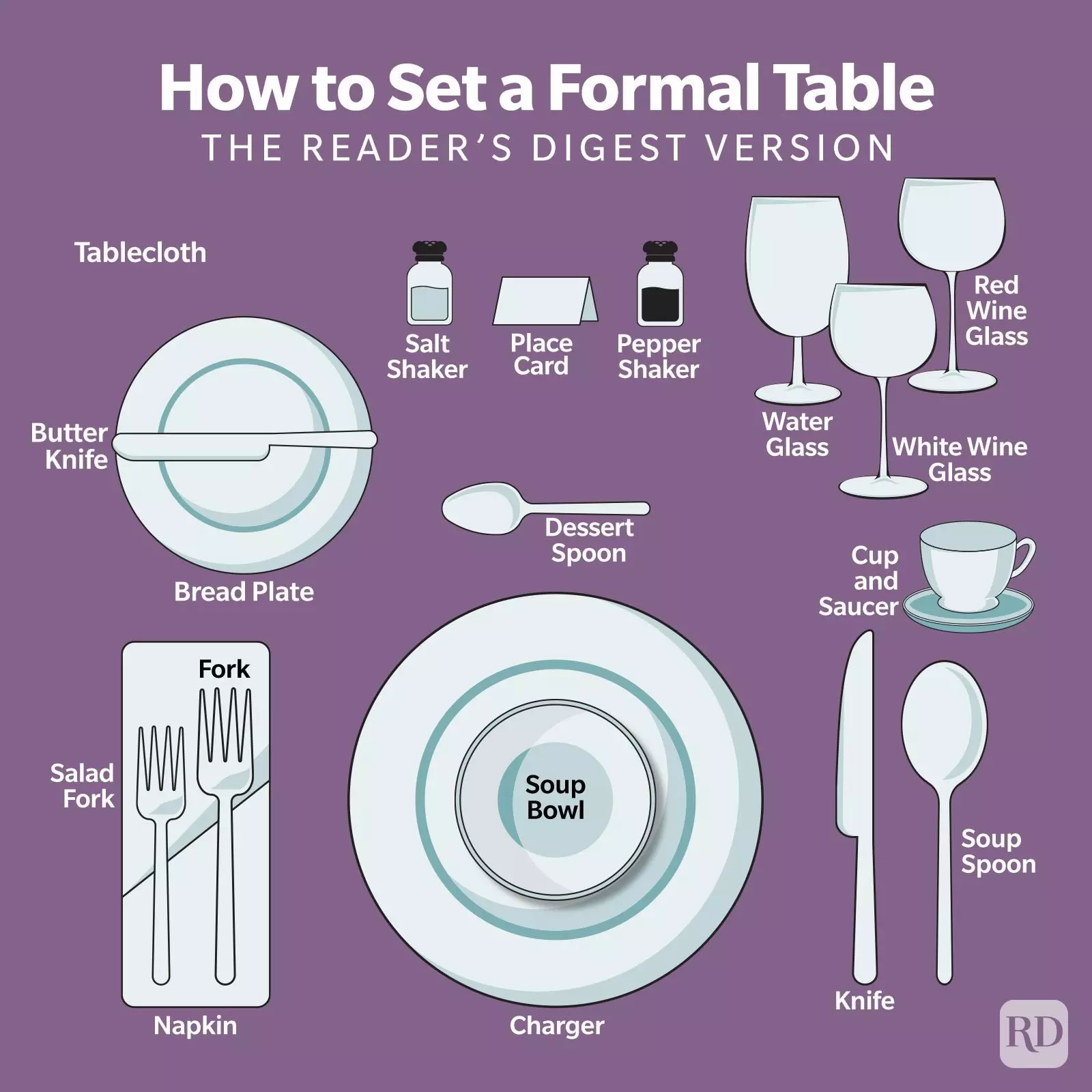Have you ever wondered how to set a table properly for different occasions? With changing dining habits, it's easy to feel unsure about table settings and etiquette. However, knowing the basics of table setting can elevate your dining experience and show respect to your guests. Whether it's a casual lunch or a formal holiday dinner party, a beautifully set table goes a long way.
Setting the Tone: From Casual to Formal
The type of table setting you choose sets the tone for your event and communicates the level of formality to your guests. It also shows that you value their presence and have taken the time to create an inviting atmosphere.
How to Set a Basic Table
 Aviral Gupta/rd.com
Aviral Gupta/rd.com
A basic table setting is perfect for weeknight family dinners or casual outdoor gatherings. It requires minimal effort and is the least formal option. The key difference between a basic table setting and a more formal one is the number of utensils.
To set a basic table:
- Use a place mat or tablecloth to protect your table.
- Place your dinner plate on the place mat.
- Fold your napkin and position it to the left of the dinner plate.
- Place your fork on top of the napkin.
- Position your knife to the right of your plate with the blade facing in.
- Place your water glass on the table above your plate, slightly to the right.
Remember, knives always go on the right side with the blade facing in, and forks are always placed on the left.
How to Set a Casual Table
 Aviral Gupta/rd.com
Aviral Gupta/rd.com
If you're hosting an informal dinner party or a slightly more elevated gathering, a casual table setting is ideal. It adds a touch of sophistication without being overly formal.
To set a casual table:
- Start with a place mat or tablecloth.
- Place your dinner plate on the place mat.
- Add a salad plate and/or a soup bowl on top of the dinner plate, if needed.
- Fold your napkin and position it to the left of the dinner plate.
- Place your fork on top of the napkin.
- If needed, position your salad fork to the left of the dinner fork.
- Position your knife to the right of the dinner plate.
- If needed, position your soup spoon to the right of the knife.
- Place your water glass on the table, above and slightly to the right of your dinner plate.
- Add a wine glass slightly above and to the right of the water glass.
Remember, even for a casual table setting, the basic rule of placing forks and napkins on the left side remains the same.
How to Set a Formal Table
 Aviral Gupta/rd.com
Aviral Gupta/rd.com
For formal events like dinner parties or weddings, a formal table setting adds elegance and sophistication to the occasion. It involves more utensils and plates than other settings, creating a grand atmosphere.
To set a formal table:
- Cover your table with a crisply ironed tablecloth.
- Place a charger down on the table.
- Set your soup bowl on top of the charger.
- Position your bread plate slightly above and to the left of the charger.
- Place your butter knife on the bread plate, with the blade facing in toward the charger.
- Place your napkin to the left of the charger.
- Place your dinner fork on top of the napkin.
- Position your salad fork to the left of the dinner fork.
- Position your knife to the right of the charger.
- Add your soup spoon to the right of the knife.
- Right above the charger, position a dessert spoon horizontally, with the handle on the right side.
- If guests will be using individual salt and pepper shakers, place them above the dessert spoon.
- If using place cards, position them above the dessert spoon, between individual salt and pepper shakers if necessary.
- Add your glassware. First, place your water glass slightly above and to the right of the charger. Then, add a red wine glass to the top right of the water glass. Finally, add a white wine glass to the bottom right of the water glass. Additional glassware, such as champagne or sherry glasses, can be added if needed.
- Set your coffee cup and saucer on the table or bring it out when you serve dessert. If placed now, position it on the bottom right of the glassware.
A formal table setting allows you to showcase your creativity with props like menu cards, place cards, and special flowers. Remember to arrange flowers in a way that doesn't obstruct guests' sightlines or overpower the table with fragrance.
FAQs: Expert Tips and Insight
How do you set a table for lunch?
For an informal lunch, you can mimic a basic or casual table setting. Omit wine glasses and stick to a water glass as your drinkware.
What can you leave out of a formal table setting?
One element of a formal table setting that is no longer necessary is the finger bowl. Finger bowls are a thing of the past. Fish knives can also be left in the drawer as they are not commonly used during informal dinners.
Where do forks go on a table setting?
Forks always go on the left side, regardless of the formality of the table setting. Knives are placed on the right with the blade pointing in, and a soup spoon is added on the right if soup is served.
What's the golden rule of table setting?
Utensils should always be placed in the order they will be used, from the outside in. Remember the iconic scene from the movie "Pretty Woman" and work from the outside in when choosing utensils.
How do you remember where to put everything?
To remember the placement of items on a table, think of the BMW logo: bread on the left, main course in the middle, and water on the right. You can also make a lowercase "b" and "d" with your hands as a visual reminder.
About the Experts
-
Maryann Parker is the founder and executive director of Manor of Manners, specializing in luxury etiquette teachings. With almost a decade of experience, she assists luxury brands, businesses, and individuals with their etiquette needs. She is also the author of "The Sharpest Soft Skill" and "Posh Overnight."
-
Lisa Grotts is a 23-year certified etiquette expert who guides clients and readers in dealing with various business, social, and political situations. As a former director of protocol for the city and county of San Francisco, she is a certified etiquette professional and a past member of the International Society of Protocol and Etiquette Professionals.
Remember, setting a table is not just about following rules; it's about creating an atmosphere of comfort and making your guests feel special. Use these guidelines as a starting point and feel free to add your personal touch to each occasion. Happy hosting!

















